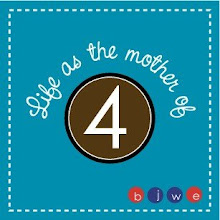Earlier this year, I read another article written by him and sent him an email about that article as well. He wrote me back – twice. The difference in tone between the two articles is, for me, a little sad. The Dr. Parikh I briefly corresponded with was respectful. (Perhaps I like him because he called me “smart and civil.”) But he seems to have moved in a different direction.
And apparently, I have as well. I noticed that on I Speak of Dreams Blog I am listed as an anti-vaccine writer. I giggled at first, and then I wondered if I should send an email thanking the author for including me. But it also caused to reflect on whether I truly am anti-vaccine; because, after all, if I call on others to reflect on their position I should do the same.
I started motherhood firmly in a pro-vaccine, anti “anti-vacciner” position. I actually had the gall (to my embarrassment) to call people out for not vaccinating their children. But after a long painful period of questioning and study, I realized that something I had done had permanently damaged my children.
I believe that vaccines have and do benefit mankind. I never had to have the smallpox shot because it was eradicated before I was old enough to get it. I’m grateful my children aren’t at risk from polio. But I believe that the benefits of vaccines tend to be overstated. Rates of disease drop dramatically once people have consistent access to clean water, soap and good sanitation! As for the “herd immunity” argument – I address that here. I live in a first world. Therefore, my risk factors are different than they would be in a third world country. It convinces no one to use fear based reasoning when they have an understanding of actual risks.
Vaccines are size-one-fits-all medicine. There is no allowance for genetic factors, immune problems, etc. Cancer treatment is based on a patient’s symptoms and needs. Why are vaccines so different from how medicine is generally practiced? Answer: money, both because of the cost of testing individual children and the profits made by the pharmaceutical industry and the profits the doctors themselves make from vaccinations. Pharmaceutical companies are for profit. It’s dangerous and foolish to assign more morality to this industry than you would the banking industry.
So, am I anti-vaccine? Well, my youngest child received a vaccine in October. Thus, I cannot be opposed. Calling someone who questions the safety of vaccines anti-vaccine is a "straw man" argument.
I’m careful about which vaccines my children get. I no longer let anyone bully me about vaccines. I tend to know more about vaccines than your average person and probably even more than your average doctor. Doctors rely on the CDC and NIH to tell them if vaccines are safe. Pediatricians are generalists. That’s their job. We need them to know enough about a lot of things to know if there is a problem. The weakness with a generalist is that there are holes in knowledge. If they are getting questionable information from government agencies and pharmaceutical companies they probably won’t know it.
For someone not in my position it’s hard to understand the enormity of the betrayal of governmental entities charged to protect us. The CDC investigated thimerosal in 2000. The CDC published a study in late 2003, repudiating any possible link between thimerosal and autism. However, though the Freedom of Information Act the American public found out that they had “massaged” the data. Their original data “showed a 2.48% increased risk of neurodevelopmental disorders in children who had received the mercury laced vaccines.” But after adding younger children and eliminating children born prematurely, the CDC was able to release a lower percentage.
http://www.safeminds.org/government-affairs/foia/simpsonwood.html
One of the doctors, Dr. Johnson actually said (pg 198), “My gut feeling? It worries me enough. Forgive this personal comment, but I got called out at
Dr. Johnson didn’t want his grandson to receive a vaccine with thimerosal but my son received a thimerosal containing vaccine the day after he was born. He didn’t get the same chance Dr. Johnson’s grandson did. He didn’t warn me.
There’s not enough space to go through the flaws in the studies commonly cited to prove vaccines don’t cause autism or to read the studies supporting vaccines triggering autism. Check here, here, here and here (if you're interested in more Martha Herbert here is her website). Start reading the Schafer Autism Report, a collection of articles, studies, etc. dealing with autism. It is an unbelievable collection of information that goes back years!
Frankly, I don’t think anyone could write any article that would prove to anyone else that vaccines trigger autism. It requires a lot of time and energy to even delve into the subject. I'm still waiting for a vaccinated vs. unvaccinated study. The closest we have now is a phone survey from California.







12 comments:
You say that you probably know more about this subject than most doctors and most people, yet you keep referring to thimerosal as mercury. Do you refer to salt as "sodium" or "chlorine"? Because that is what you are doing with thimerosal.
Occasionally I do. That's one of the side effects of being married to a chemist. ;)
Ender, when I say that I probably know more about this subject than most doctors and most people I don't consider that hurdle very high. Anyone who took the time could say the same thing. I'm not insulting doctors when I say this. They rely on the CDC and NIH to tell them if vaccines are safe. And I don't necessarily fault them for that.
The reason that I call thimerosal mercury is that after it enters the body it is broken down into ethyl mercury and thiosalicylate.
My 11 year old son knows that salt is sodium chloride and that adding a chlorine atom to something often makes it a salt. Marcy
The issue with referring to thimerosal as 'mercury' is that many in the anti-vax movement (I'm not referring to you here, but 'the rest', so to speak) talk about ethylmercury and methylmercury as if they are interchangeable.
To call them both 'mercury' is to associate yourself with that group, even though you may know the difference, and even though you may be referring to the fact that they both deposit quantities of mercury in one's brain.
If it looks like a duck and quacks like a duck, it's likely to be a duck.
If you talk like a member of the anti-vax movement, and provide links to the anti-vax movement sites (14 studies), then people are likely to reasonably infer that you are an anti-vaxxer.
You may claim that the label is inaccurate (and since corresponding with you, I believe that it is fairly inaccurate), but... you're quacking and you have feathers. ;)
The "anti-vaccine" group (wow, I hate referring to us like that because I don't think that's what we are. I guess that's another post.)knows the difference. The general population doesn't. When I talk to people I try to explain the difference but their eyes glaze over and I've lost them before I even get to the important stuff. Thimerosal is almost 50% organic mercury. I feel it's pretty accurate to refer to it in a more understandable way for the general public.
So what is the difference between organic and inorganic Mercury? I hadn't heard of this distinction before reading your blog.
The medical community seems much more focused on the difference between ethyl-mercury and methyl-mercury: why is this distinction less relevant/important?
Brian,
The distinction is the type of chemical bonding. Inorganic mercury refers to mercury that is in the metallic state or is a charged ion (a ‘salt,’ such as mercury chloride). Organic mercury is mercury that is chemically bonded to a carbon chain molecule – methylmercury and ethylmercury being the simplest organic mercury compounds (which also include thimerosal). Inorganic mercury forms (metal, vapors, mercury salts) are less toxic than organic mercury because it doesn’t absorb easily into the body – if ingested most passes through the digestive tract. Organic mercury is readily absorbed by tissues and transported around the body.
It is not the "anti-vax movement" that has treated methyl and ethyl mercury as interchangable. Rather, due to the almost complete lack of toxicity data on ethylmercury, researchers (and regulatory agencies) have used methylmercury exposure data as a proxy for ethyl mercury toxicity. The activists asking 'safer vaccines' are reasonably demanding that this huge gap in toxicity data be corrected, or better yet, thimerosal be removed from all injected medications.
As shown by the Burbacher study referenced in this blog (comparing exposure to the two compounds in monkeys), ethyl and methyl mercury are not comparable. The following summary of the study (from the NIH website) is interesting:
Since the 1930s, vaccines have contained thimerosal, a mercury-based preservative that breaks down to ethylmercury and thiosalicylate in the body. By some calculations, children given the usual schedule of vaccines containing thimerosal receive ethylmercury in doses exceeding the U.S. Environmental Protection Agency’s guidelines for methylmercury, a known neurotoxicant. Because of the lack of pharmacokinetic and toxicity data for ethylmercury, methylmercury has been used as a reference for ethylmercury toxicity based on the assumption that the two compounds share similar toxicokinetic profiles. However, a new animal study shows that methylmercury is an inadequate reference for ethylmercury due to significant differences in tissue distribution, clearance rates, and ratios of organic to inorganic mercury in the brain.
http://www.ncbi.nlm.nih.gov/pmc/articles/PMC1280369/
I would argue that asking "what level of exposure to ethyl mercury can we give without injury" is the wrong question. The question should be why have we allowed thimerosal to remain in vaccine formulations for decades, after mercury-containing compounds have been eliminated from virtually every other medical and consumer product formulation? Why would you knowingly inject any amount of organic mercury? Are vaccine formulations exempt from common sense? Haven't we developed something better to use as a preservative in the last 60 year? It's just stupid to keep using thimerosal in an injectable formulation. That's not an "anti-vax" argument. That's a reasonable and simple demand to remove a neurological risk in the vaccine supply.
Yes, I know, thimerosal has been removed from most childhood vaccine formulations, but continues to be used in the flu vaccine formulations (which are recommended for pregnant women!), as well as others. It is plain indefensible to use a mercury-based preservative in an injectable product simply because we've been doing so for decades. We don't use lead in paint or in gasoline anymore. Can we bring our vaccine formulations out of the 1930's, please?
Anonymous, in your last paragraph you refer to flu vaccines as containing thiomersal (or thimerosal as you Americans insist on calling it!)
Multi-use vials contain it, but not all single use vials - you can actually check with your doc, or the vaccine manufacturer for more information.
I had the H1N1 shot 3 months ago as did my autistic son and my non autistic son.
3 months pffft - I'm a month ahead of my self already. . 2 months.
I'm not sure about other countries, but in the US, most people get the multi-use vial. I hope your family dodges the H1N1 bullet (and mine too)!
Your blog keeps getting better and better! Your older articles are not as good as newer ones you have a lot more creativity and originality now. Keep it up!
And according to this article, I totally agree with your opinion, but only this time! :)
Post a Comment